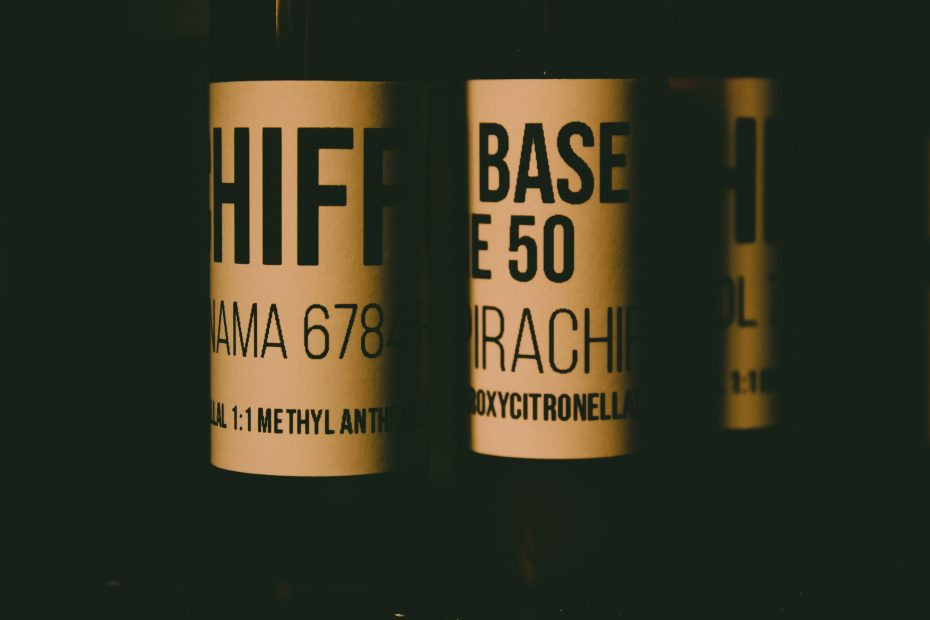Topi Turunen is a PhD researcher in environmental law at CCEEL / UEF Law School and a Researcher at the Finnish Environment Institute.
Photo by Fulvio Ciccolo on Unsplash.
The European Union (EU) is seeking to make the European economy more sustainable through its Circular Economy Action Plan. The interface between chemical, products and waste legislation presents some complex challenges for the objectives of the circular economy package. In January 2018, the European Commission published a communication and staff working document on options to address linkages between three key pieces of EU law, namely the Waste Framework Directive, Regulation on Classification, Labelling and Packaging of Substances (CLP) and the REACH regulation.
Four key challenges
There are four key challenges in the interface between chemicals, products and waste legislation that the communication seeks to address. The first is that waste management operators often do not have adequate information on the presence of substances of concern. This makes controlling the life-cycle of certain chemicals complicated. Information on the composition of materials is available in the supply chain in accordance with chemicals legislation. However, when a material becomes waste, waste treatment operators are not considered to be a part of the supply chain and the information on the material’s composition is therefore not made available to them. Under chemicals regulation, operators recovering chemicals from waste are considered as manufacturers and as starting a new supply chain for the substance in question. The recovered substances will have to be either registered as any new substances; or registered as UVCB substances (i.e. substances of Unknown or Variable Composition, Complex Reaction Products and Biological Material); or the composition of the material has to be identified through the safety data dossier of similar substance that has already been registered in the case of recovery exemption. Hence the identification of the composition of the waste-based materials according to REACH cannot be by-passed in recovery although REACH explicitly does not apply to material when they are still considered ‘waste’. The administrative costs to fulfill obligations of REACH can be high and it has been pointed out that the supervision of recovery exemptions tends to have loopholes.
The second challenge relates to the question of whether the recovery of so-called ‘legacy substances’ (substances that are commonly present in products but that have been prohibited or restricted in new products) should be promoted in order to increase the overall recovery of wastes. Waste streams containing legacy substances can be huge in volume and their recovery can therefore have a substantial impact on the achievement of circular economy objective for more efficient material circulation. Nevertheless, it remains unclear whether the risks of using such wastes can be balanced through the positive environmental impacts of their recovery from the waste stream.
The third challenge is that the regulation of End-of-Waste criteria is not fully harmonised within the EU and it is therefore not always clear when a product or substance ceases to be waste. The Commission is therefore proposing a more harmonized EU-wide regulation of different waste streams ceasing to be waste and more uniform rules for the End-of-Waste schemes in the EU Member States.
The fourth key challenge relates to some discrepancies in waste and chemicals regulation: hazardous waste is not always considered hazardous as a chemical according to the CLP Regulation after it has gone through a recovery process and ceased to be waste. Moreover, hazardous chemicals are not necessarily considered hazardous waste after being discarded.
Thoughts on the way forward
Solving the four key challenges will be complicated. What will be required is either new legislation or significant amendments to the existing legal framework. Possible measures include abolishing the recovery exemptions system, redefining the scope of supply chains and expanding the scope of extended producer responsibility schemes. The downside of abolishing the recovery exemptions system would be increased administrative burdens that risks creating a disincentive for recovery. On the positive side, this would result in safer material cycles and reduce the possible negative impacts of wastes by improving the monitoring of chemical substances in waste recovery. Redefining the supply chains and strengthening the extended producer responsibility both emphasise the crucial role of manufacturers and importers: the life-cycle of the product and its properties have to be taken into account in order to reach the objective of effective and safe material cycles. The distinction between waste and products could also be clarified with more harmonized EU-wide End-of-Waste regulations and clearer criteria for when an object or substance ceases to be waste. Finland has taken initial steps towards improving the quality of its End-of-Waste regulation by starting to draft national end-of-waste legislation and a guidance to support case-by-case decision-making.
Once waste ceases to be waste, it will be subject to the same regulatory framework as similar non-waste products. Therefore the acceptance of legacy substances in recovered materials seems unlikely and it seems more likely that their use in products will remain unlawful. A further argument in support for the proposed approach is that the evaluation of trade-offs between the positive impacts of recovery and the negative impacts of using legacy substances would most likely prove to be extremely complicated and expensive.
Coming back to the Commission’s recent proposal, a final aspect worth noting is that the proposal does not create any obligations for stakeholders. The Commission however proclaims that it will start multiple research projects and aims to work with relevant stakeholders and European Chemicals Agency (ECHA) in order to solve the above-mentioned problems. This process should be well under way by the time the current Commission’s term comes to a close at the end of 2019.
This blog post is based on the following article, published in the Finnish Journal of Environmental Law:
Turunen, Topi: Kemikaali-, tuote- ja jätesääntelyn rajapinnan ongelmakohdat – kommentteja komission tiedonannosta keskinäisistä yhteyksistä. Ympäristöjuridiikka 1/2018, pp. 44–60.
